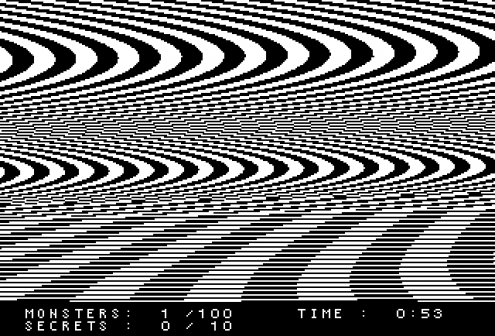JODI in group show at Shanghai Ming Contemporary Art Museum

JODI in group show at Shanghai Ming Contemporary Art Museum
Player of Beings
December 12, 2020–March 28, 2021
Shanghai Ming Contemporary Art Museum
No.436 East Yonghe Road, Jing'an District
200072 Shanghai
China
Hours: Tuesday–Sunday 10am–6pm
Artists: aaajiao; Cao Fei; Chen Houwen, Cui Yecheng, Qi Zihang, Liu Jinxing, Liao Ziling, and Wu Jingyi; Ding Nan, Lei Jianhao, and Qu Mingfei; Feng Mengbo; Jeffrey SHAW; JODI; Lu Fei, Sun Hao, and Zhu Qia; Lu Yang; Peng Jiayuan, Wang Changcheng, and Wang Mengyao; Zheng Guogu
Curator: Qiu Zhijie, Chen Baoyang
Human beings have learned to play games through chasing each other before learned to walk upright. After mastering the use of tools, we transformed the simplest cube into a most extensive form of game. For a brief while, the relationship between game and human diverged from the evolution of tools and technology, and turned towards constructing a training field of thoughts on game boards. In stead of chasing each other, people started chasing the glory of victory, and then, what else?
“The player controls the CRT beam by adjusting the knobs, which change the trajectory of the beam spot on the display screen, representing artillery shell. The plastic targets overlaid on the screen represent objects such as airplanes. The player fires the beam spot arcing towards the airplanes within a time limit. If the CRT beam hits one of the target coordinates, then it defocuses, representing the explosion of the airplane.”
—Cathode-ray tube amusement device 1947
When the earliest video game, the cathode-ray tube amusement device, was first invented, computers were still at a stage of reading punched tapes; while the knobs and the CRT beams already provided us the archaic interactive framework consisted of a display screen and an input device. The Magnavox Odyssey released in 1972 first brought video games into people’s living rooms from giant mainframes in the engine rooms. Five years later, the Macintosh born in the garage and the Atari 2600 which released the same year initiated a never ending rivalry in the gaming industry between “Console vs. PC”. And since then, video game has become a part of our lives.
Before examining the relationship between game, human and society, it is essential to first look at the gaming interface which progressed along with the evolution of technology. From the cathode-ray tube amusement device, to Pong, and to the epic wars, people seem to be obsessed with accurately representing our world on a two-dimensional screen. The common pixels have now been advanced with real-time ray tracing through 3D computer graphics. From one-dimensional knob and button, two-dimensional mouse and joystick, to three-dimensional motion sensor, the evolution of these interactive devices reflects a persistent desire to shorten the gap between reality and the game world.
Unravelling game among various systems of coordinates, we fantasize the unknown and revisit historical scenes; we exercises our tactics and strategies, yet sometimes further triggers our anxiety and stress. Beneath the flickering light of the screens, game has become a bridge, connecting people with each other and everything else. Activating traditional culture through the lens of new technology, game carries us to break the boundary of time. From the abstract dimension of time to the vast territory of land, game enables us to gain attention to social connections that often being overlooked, and cultivates our compassion. Dream pursuers who left their hometown get to make new friends in game, catch up with the old ones and re-encounter their motherlands. Aside from victory and defeat, players learn to perceive the world and become aware of themselves through the sheer pleasure of gaming, and game then gradually becomes a way of healing.
Producer: Li Songjian, Ling Feifei
Organizer: Ming Contemporary Art Museum (McaM), Ming Yuan Group
Co-organizer: CAFA lnstitute of Sci-Tech Arts
Supporter: Tencent Games, Tencent TGC
Venue: No. 436, East Yonghe Rd, Jing’an District, Shanghai
Image: JODI, Untitled Game - ctrl-space, 1999-2002
Software - Quake 1 game engine, C++

